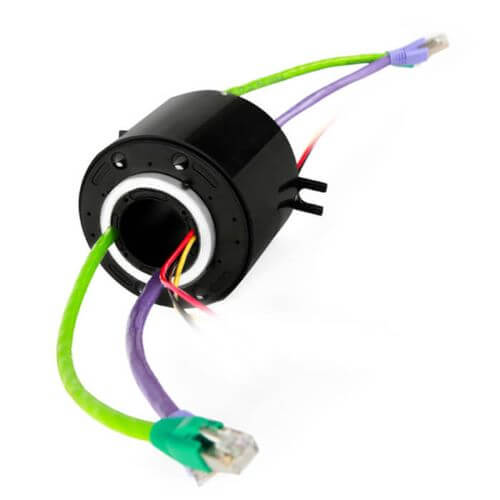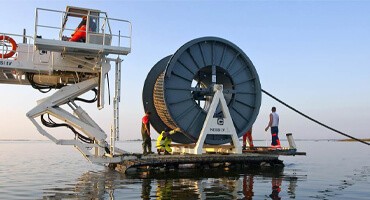The Purpose of this comprehensive guide is primarily to enlighten readers with the specialized field of ‘slip ring plumbing.’ This niche but crucial sector plays a significant role in various industries, influencing the predictability, efficiency, and overall functionality of diversified applications. Irrespective of your professional experience—be it a veteran in the industry or a novice just dipping their toes in the mechanics of plumbing—the article intends to educate you on the intricate details of slip rings in plumbing systems.
Through the narrative, we aim to bridge any gaps in understanding such complex systems, facilitating your capability to effectively deploy and integrate these components in real-world applications. This acquired knowledge would be equally valuable whether you are tasked with designing a novel system or troubleshooting an existing one.
Moving onto User Benefits, this article brings an array of advantages for its readers. Firstly, it curates a comprehensive repository of information about slip ring plumbing, bundling insights derived from the industry’s collective wisdom. It offers a look into the fundamental aspects of plumbing slip rings, their core components, and an in-depth explanation of their formulation. The knowledge builds progressively, allowing the reader to understand subtle nuances and intricate interactions within the slip ring plumbing systems.
The article is designed as a hands-on guide as well, providing sequential steps that outline processes like installation, operational methods, and problem-solving strategies. The objective is to empower readers with practical, actionable knowledge that they can utilize in their unique circumstances, be it for professional applications or pursuing a passionate hobby in mechanics.
Moreover, it serves as a bridge between theory and practice, offering professional advice on potential issues and preventive measures. This approach ensures readers can mitigate common concerns and enhance system efficiency.
In sum, this article is a cornerstone for those seeking to understand, apply, and troubleshoot ‘slip ring plumbing’ effectively. By appending academic theories, time-tested strategies, and present-day practicalities, we provide a holistic perspective of the complex field of slip ring plumbing. With a coherent structure and progressive learning curve, we cultivate a valuable tool to enhance your expertise in the industry.
Overview of Slip Ring Plumbing
When we delve into an Explanation of ‘slip ring plumbing,’ we’re exploring the world of a sophisticated system that, at its core, is designed to facilitate the uninterrupted transmission of power, data, or signals while parts of the system rotate. Slip rings—also known as rotary electrical interfaces, rotating electrical connectors, and electrical rotary joints—are electromechanical devices that achieve this crucial function.
In a plumbing system, these slip rings play an integral role by providing a steady connection between components that are required to rotate or move, preventing issues such as wire tangling. In addition to configuring the electric power or signals between a fixed structure and a rotating assembly, they also accommodate hydraulic or pneumatic interfaces, thus warranting the term ‘slip ring plumbing.’
Adding dimensionality to our understanding with insights from an Industry Expert viewpoint, the importance of slip ring plumbing truly shines. As professionals who design and manufacture these pivotal components, we witness their applications and benefits on an everyday basis. The use of slip rings in plumbing systems is ubiquitous, spanning multiple industries.
For example, in a wastewater treatment plant, rotational bio-contacts rely on slip rings for transmitting power within a rotating arm assembly. Similarly, in the food and beverage industry, slip rings find applications in rotating tanks and mixers—enabling a continuous flow of power/data while allowing uninterrupted rotation.
By incorporating slip ring technology in plumbing systems, businesses achieve greater efficiency, minimal maintenance, and fewer disruptions in operation. This versatility and capability to improve the overall functionality of numerous applications underlines the importance, broad relevance, and use of slip rings in diverse sectors and different scales of operations. Therefore, understanding slip ring plumbing becomes vital for anyone hoping to optimize systems and tackle technical challenges efficiently.

Core Components and Formulation of Slip Rings in Plumbing
Unpacking the main Components of slip ring plumbing, we delve into an intricate system involving several sophisticated parts, each fulfilling a specific function and collectively contributing to the system’s overall performance. The core parts of a slip ring typically include the rotating ring, stationary brush, and an insulation system.
The ‘rotating ring’ made of conductive material plays a crucial role in transferring electricity or signals. Connected to this ring is the ‘stationary brush,’ often crafted of metal graphite, which maintains contact with the rotating ring to transmit power or signals while allowing for motion. Finally, there’s the ‘insulation system,’ usually a combination of high-performance insulating materials, which prevents power leakage and short-circuiting by keeping the rotating ring and stationary brush structurally separated and electrically isolated.
The materials used for these components are meticulously chosen based on their characteristics, like endurance, conductivity, durability, and others which are crucial for their individual functional contribution.
Switching gears to the Importance of Designing, the design of slip ring plumbing systems is an exercise in nitpicking detail, even as it constitutes the basis for its performance and longevity. Intelligent design integration is pivotal—it aligns the operational efficiency of individual components to the overarching system’s reliability and productivity.
From CAD modeling to the final assembly, every step of the design process influences the slip ring’s ability to transmit power effectively, sustain robust functionality under rotational stress, and exhibit long-term dependability. Forethought in design selection can assist in preventing common issues such as electric noise, mechanical vibration, and wear & tear.
A well-designed slip ring in plumbing systems ensures optimal contact between the brush and ring, proper sizing for the intended application, and effective insulation to prevent potential short circuits. These factors collectively extend the life span of slip rings and drastically reduce the need for frequent maintenance, reinstallation, or replacement. The intimate link between intelligently integrated design and the superior performance of slip rings underlines the importance of understanding slip ring design for both professionals and enthusiasts in the field.
Application of Slip Rings in Plumbing
In the realm of Practical Application, slip rings play a critical role in several systems requiring the steady transmission of electrical signals or power amidst continuous rotation. HVAC (Heating, Ventilation, and Air Conditioning) systems are a great example — slip rings are instrumental in regulating temperature and maintaining comfortable indoor climate conditions by connecting rotating fan blades to stationary wiring with a constant power stream without hindrance.
You’ll find similar applications in industrial sectors too. Slip rings are vital in rotating tanks in the food and beverage industry, where they facilitate continuous signal or power transmission to mixers and dispersers undergoing rotation. Wastewater treatment plants also widely use slip ring plumbing to manage rotary biocontactors which need to rotate consistently while transmitting power.
In the digital age, even cable reels in the telecommunication industry make use of slip rings for the unhindered transmission of data signals. Such diverse applications underline the importance of slip rings in different equipment setups, making their understanding and maintenance vital.

Moving on to User Worry Points, a few common concerns relate to longevity, reliability, and performance degradation over time. One major worry is the wear and tear due to friction between the stationary brush and rotary ring, potentially leading to fluctuating signal transmissions or total system failure.
To mitigate these issues, it’s essential to maintain proper lubrication between these components, reducing friction, and enhancing longevity. Regular maintenance and inspections can address existing failures early on, preventing exacerbation and minimizing operational downtime.
Another prevalent concern pertains to the installation process. To counter issues arising from incorrect installation, users are advised to follow methodical steps as per the manufacturer’s instructions. Using the correct tools, aligning components accurately, and conducting a ‘run-in’ period (rotating the assembly for some time before commencing actual operations) can significantly reduce operational issues.
By adopting these preventative measures and solutions, users can not only ensure the smooth operation of slip ring plumbing systems but also significantly increase their lifespan and reduce periodic maintenance costs.
Installing and Maintaining Plumbing Slip Rings
Coming to the Installation Process, proper assembly is pivotal to the longevity and smooth operation of slip rings. Therefore, it’s of paramount importance to meticulously follow each step from the professional’s playbook:
- Equipment Preparation: Gather all necessary equipment and tools, such as slip rings, connections, screws, mounting brackets, and measuring tools so you have everything readily available.
- Positioning the Slip Ring: Following the manufacturer’s guidelines, select the optimal position for the slip ring, keeping the system’s rotation and overall assembly in mind.
- Attach Mounting Brackets: Secure the slip ring in the selected position using the correct mounting brackets. Ensure it is stable and allows for the anticipated range of rotation.
- Connect Slip Ring: Connect the power or data input and output as per the instructions. Make sure to match each connection to the appropriate terminal correctly.
- Run-In Period: Rotate the assembly for some time before connecting to the actual power source or signal transmitter. This helps to optimize contact and minimizes potential issues.
With respect to Maintenance Practices, while slip rings are designed for durability and long-term usage, their performance significantly benefits from regular maintenance:
- Regular Inspections: Check the slip ring assembly at regular intervals for any visible defects, abnormal noises, or changes in performance.
- Lubrication: Friction between the brush and the ring can deteriorate the slip ring over time. Application of suitable lubricant, as per the manufacturer’s guidance, reduces this friction and enhances the lifespan of the unit.
- Cleaning: Regular cleaning is crucial. Remove dust or foreign particles meticulously to avoid hindrances in the smooth operation of the slip ring.
- Replacement of Worn Parts: Over time, some components of the slip ring may deteriorate faster than others—e.g., the brushes. If during inspection these appear worn or degraded, replace them promptly to prevent larger system issues.
- Professional Maintenance: In case of critical issues or perceived mechanical failures, engaging professional maintenance services is advisable to prevent further damage and ensure the optimal functioning of the system.
Adopting these insightful steps in installation and inculcating regular maintenance practices are key to the efficient, long-term operation of slip rings in plumbing systems, significantly reducing downtime and maintenance costs.
Future Potential Developments and Improvements in Slip Ring Plumbing
Casting an eye towards Future Trends, slip ring plumbing is poised to witness significant technological advancements aimed at improving electrical conduction, reducing wear, and enhancing signal fidelity.
One intriguing development is the shift towards ‘contactless’ or ‘brushless’ slip rings. Leveraging magnetic or optical means for power and data transmission, this technology significantly minimizes mechanical wear and tear, thereby enhancing the life and reliability of the unit.
Wireless power transmission technologies could also play a major role in the evolution of slip ring plumbing. Couple this with advancements in material science offering wear resistance and improved conductivity, we can potentially see a whole new generation of slip rings with enhanced durability and efficiency.
Digital innovations, too, are playing a part. The integration of IoT technologies and machine learning algorithms could lead to ‘smart’ slip rings that can monitor their own performance, predict failures, and even dynamically adjust their operation to compensate for issues and optimize performance, all in real-time.
Shifting the focus to Advantages for Users, these advancements in the slip ring technology landscape offer a multitude of benefits. Contactless slip rings, for instance, would reduce concerns about brush wear and maintenance, significantly trimming down the cost and time investments.
Wireless power transmission technologies could open up new design possibilities, introducing more flexibility in system architectures. The potential for slip rings with enhanced durability and efficiency could translate to less frequent replacements, rendering cost savings and reducing system downtime.
Lastly, IoT-integrated ‘smart’ slip rings would give users unprecedented levels of control and real-time diagnostics. They would be able to react to potential failures before they become critical, automate maintenance schedules based on actual performance data, and identify opportunities for system optimization.
Such trends would invariably lead to improved functionality and efficiency for the varying applications of slip ring plumbing. By staying abreast with these future advancements, users can potentially leverage these evolving technologies to address their specific needs, optimize their operations, and reduce costs.
Conclusion
This article aimed to provide a comprehensive understanding of slip ring plumbing. By laying out the basics, the core components, practical applications, and maintenance tips, we hoped to empower our readers with the knowledge to effectively manage these components. As we continue to advance in this field, maintaining a good understanding and practical application of slip ring plumbing will become increasingly vital to everyone.
FAQs on Plumbing Slip Rings
In the realm of slip rings in plumbing, certain questions consistently surface from users. Here, we’ve assembled some of the Common Questions along with concise answers, drawn meticulously from industry expertise:
Q: What is the main function of a slip ring in plumbing?
A: The primary function of a slip ring in plumbing systems is to facilitate the continuous transfer of electrical signals or power between a stationary part and a rotating part of the system without hindering rotation.
Q: What are the key components of a slip ring?
A: The three core components of a slip ring are the rotating ring made of conductive material, the stationary brush often made of metal graphite, and the insulation system that prevents power leakage and short-circuiting.
Q: Why is maintenance important for slip rings?
A: Maintenance is a vital aspect of the use of slip rings for two main reasons. Firstly, it ensures that the slip rings continue to function optimally by preventing mechanical or electrical failures. Secondly, it extends the lifespan of the slip rings, reducing the frequency of replacements and avoiding unplanned downtime.
Q: How often should I inspect or maintain my slip ring system?
A: The frequency of inspection or maintenance can depend on the operating conditions and intensity of use. However, as a general rule, regular checks (every 3-6 months) are advisable.
Q: What new innovations can we expect from the field of slip ring plumbing?
A: Future potential developments include contactless slip rings, wireless power transmission technologies, and the integration of digital technologies, such as IoT and machine learning. These advancements could lead to reduced wear, improved electrical conduction, and smarter operation of the system.
Proactively addressing these prevalent questions helps users to better understand the mechanics, use cases, and care requirements of slip rings in plumbing. It also keeps them abreast of significant developments to leverage for optimized operations and cost reductions.
See What We Can Do

